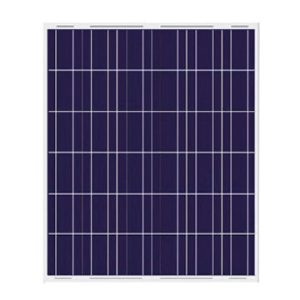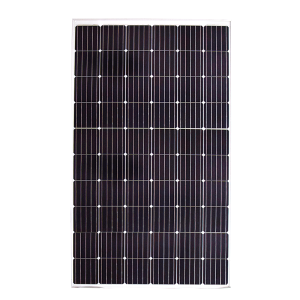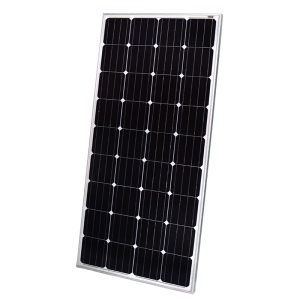In the ever-evolving quest for sustainable energy solutions, the Philippines has emerged as a prime destination for harnessing the power of the sun. With its tropical climate and abundant sunshine, the country offers an ideal environment for solar energy generation. Among the various solar panel options available, the 500-watt solar panel has garnered significant attention due to its impressive power output and efficiency.
These high-performance panels offer a game-changing solution for both residential and commercial applications, promising substantial long-term savings and a reduced reliance on traditional energy sources. In this ultimate guide, we’ll dive deep into the world of 500-watt solar panels, exploring their pricing, features, and suitability for the Philippine market.
Buckle up, folks, because we’re about to embark on a solar-powered journey that will leave you feeling energized (pun intended) and ready to embrace the future of renewable energy!
Definition and Overview
A 500-watt solar panel is a photovoltaic (PV) module designed to convert the sun’s radiant energy into electrical energy. These panels typically consist of multiple solar cells, often made of monocrystalline or polycrystalline silicon, arranged in a grid-like pattern and encased in a protective glass and aluminum frame.
With a rated power output of 500 watts, these solar panels are capable of generating a significant amount of electricity, making them an attractive option for homeowners and businesses seeking to reduce their energy costs and carbon footprint.
Advantages and Applications
One of the primary advantages of 500-watt solar panels is their high energy yield. With their impressive power output, these panels can generate a substantial amount of electricity, even in areas with moderate sunlight exposure. This makes them suitable for a wide range of applications, including:
- Residential Solar Systems: 500-watt solar panels are an excellent choice for homeowners looking to reduce their reliance on the grid and lower their monthly electricity bills. Imagine powering your entire home with the sun’s energy – it’s like having your own personal power plant right on your rooftop!
- Commercial and Industrial Applications: Businesses and industrial facilities can benefit from the high energy yield of 500-watt solar panels, offsetting their energy costs and contributing to their sustainability goals. Plus, who doesn’t love a little eco-friendly PR?
- Off-Grid and Remote Power Solutions: In areas where grid connectivity is limited or non-existent, 500-watt solar panels can provide reliable and cost-effective power solutions for remote communities, cabins, or off-grid installations. Say goodbye to noisy generators and hello to the sweet sound of silence (and clean energy)!
- Solar Farms and Utility-Scale Projects: Large-scale solar farms and utility projects often incorporate 500-watt solar panels to maximize energy production and meet the growing demand for renewable energy sources. After all, bigger is better when it comes to harnessing the sun’s power!
Pricing and Cost Factors
Average Price Range in the Philippines
The price of 500-watt solar panels in the Philippines can vary significantly depending on several factors. Based on market research and industry insights, the average price range for a single 500-watt solar panel in the Philippines is approximately PHP 20,000 to PHP 35,000.
Now, before you start hyperventilating at the thought of those numbers, let’s break down the factors that influence the cost of these solar powerhouses.
Factors Influencing Cost
- Brand and Quality: Just like with any other product, the brand and quality of the solar panel play a significant role in determining its price. Reputable brands like LG, Panasonic, and SunPower command higher prices due to their proven durability, performance, and warranties. On the other hand, lesser-known brands may offer more affordable options, but you’ll want to do your due diligence to ensure you’re not compromising on quality.
- Efficiency: The efficiency of a solar panel refers to its ability to convert sunlight into electrical energy. Higher efficiency panels tend to be more expensive, but they also generate more power per square foot, potentially offsetting the initial cost over time.
- Warranties and Certifications: Solar panels with longer warranty periods (up to 25 years) and certifications like IEC and UL often come at a premium. However, these guarantees provide peace of mind and ensure that your investment is protected in the long run.
- Country of Origin: Asian-made solar panels, particularly those from China, Taiwan, and South Korea, tend to be more affordable than their European counterparts. This is due to lower manufacturing costs and economies of scale.
Comparison with Other Solar Panel Wattages
While 500-watt solar panels offer impressive power output, it’s essential to consider your specific energy needs and budget when choosing the right wattage. Here’s a quick comparison to help you put things into perspective:
- Lower Wattage Panels (e.g., 300W): These panels are generally more affordable but may not generate enough power for larger households or commercial applications. They’re a great option for those with limited space or budget constraints.
- Higher Wattage Panels (e.g., 600W or more): These panels pack a serious punch in terms of power output, but they also come with a heftier price tag. They’re ideal for large-scale projects or applications with high energy demands.
Remember, the key is to strike a balance between your energy requirements, available space, and budget. Don’t worry, we’ll dive deeper into choosing the right solar panel system later in this guide.
Top Brands and Models
Popular 500-Watt Solar Panel Brands in the Philippines
When it comes to 500-watt solar panels in the Philippines, several brands have established themselves as industry leaders. Here are some of the most popular options:
- Longi Solar: Known for their high-efficiency monocrystalline panels, Longi Solar is a trusted name in the Philippine solar market. Their 500-watt panels boast impressive performance and durability.
- Jinko Solar: As one of the largest solar panel manufacturers in the world, Jinko Solar offers a wide range of 500-watt panels at competitive prices, making them an attractive choice for budget-conscious consumers.
- Trina Solar: With a strong focus on innovation and quality, Trina Solar’s 500-watt panels are renowned for their reliability and long-term performance.
- Risen Energy: Risen Energy is a rapidly growing solar panel manufacturer that has gained popularity in the Philippines due to its affordable yet high-quality 500-watt offerings.
- LG Solar: While on the pricier side, LG Solar’s 500-watt panels are known for their exceptional efficiency and industry-leading warranties, making them a premium choice for those seeking long-term value.
Specifications and Features of Leading Models
To help you make an informed decision, let’s take a closer look at some of the leading 500-watt solar panel models available in the Philippines:
- Longi Solar LR6-72HPH-500M: With an impressive module efficiency of up to 21.1%, this monocrystalline panel from Longi Solar is a powerhouse in terms of performance. It features a sleek black-on-black design and comes with a 25-year linear power output warranty.
- Jinko Solar JKM500M-7RL3-V: Jinko Solar’s 500-watt offering boasts a maximum power output of 500 watts and a module efficiency of up to 20.5%. It’s a reliable and cost-effective option for residential and commercial installations.
- Trina Solar TSM-DE09.08: Trina Solar’s 500-watt panel is a true workhorse, with a maximum power output of 500 watts and a module efficiency of up to 20.8%. It’s built to withstand harsh environmental conditions and comes with a 25-year linear power output warranty.
- Risen Energy RSM156-9-500M: With a maximum power output of 500 watts and a module efficiency of up to 20.6%, Risen Energy’s 500-watt panel is a solid choice for those seeking a balance between performance and affordability.
- LG Solar LG500N1K-V5: LG Solar’s 500-watt panel is a true premium offering, with a module efficiency of up to 21.7% and a 25-year product warranty. It’s designed for maximum energy yield and long-term reliability.
Remember, these are just a few examples of the many 500-watt solar panel models available in the Philippines. It’s always a good idea to consult with a reputable solar installer to determine the best option for your specific needs and budget.
Installation and System Components
While the solar panels themselves are the stars of the show, a complete solar panel system requires several other components to function properly. Let’s take a closer look at what’s involved in the installation process.
Solar Panel Mounting and Racking Systems
Before you can start generating solar power, you’ll need a sturdy and reliable mounting system to securely hold your solar panels in place. These mounting systems, also known as racking systems, are designed to withstand the elements and ensure optimal panel positioning for maximum energy production.
There are various types of mounting systems available, including roof mounts, ground mounts, and pole mounts. The choice will depend on factors such as the type of roof, available space, and local building codes.
Inverters and Other Necessary Components
Solar panels generate direct current (DC) electricity, but most household appliances and electronics require alternating current (AC). That’s where inverters come into play. These devices convert the DC electricity produced by your solar panels into usable AC electricity for your home or business.
In addition to inverters, a complete solar panel system may also require other components such as:
- Charge controllers: These devices regulate the flow of electricity from the solar panels to the batteries (if you have a battery backup system).
- Batteries: For off-grid or backup power systems, batteries are used to store excess energy generated by the solar panels for later use.
- Wiring and electrical components: Cables, fuses, and other electrical components are necessary to safely and efficiently distribute the generated electricity.
Installation Costs and Considerations
The installation costs for a 500-watt solar panel system can vary significantly depending on several factors, including the size of the system, the complexity of the installation, and the location.
On average, you can expect to pay anywhere from PHP 150,000 to PHP 800,000 for a complete 500-watt solar panel system installation in the Philippines. This includes the cost of the solar panels, inverters, mounting systems, labor, and any necessary permits or inspections.
It’s important to note that while the upfront costs may seem substantial, the long-term savings on your electricity bills and the environmental benefits make solar panel installations a worthwhile investment.
When considering installation, it’s crucial to work with a reputable and experienced solar installer. They can help you navigate the process, ensure compliance with local regulations, and provide guidance on optimizing your system for maximum efficiency and cost-effectiveness.
Incentives and Financing Options
To encourage the adoption of renewable energy sources, the Philippine government and various financial institutions offer incentives and financing options for solar panel installations.
Government Incentives and Rebates
The Philippine government has implemented several incentives and rebates to promote the use of solar energy. These include:
- Net Metering Program: This program allows homeowners and businesses with solar panel installations to sell excess electricity back to the grid, effectively reducing their overall energy costs.
- Tax Incentives: Certain tax incentives, such as exemptions or deductions, may be available for individuals or businesses investing in solar energy systems.
- Renewable Energy Incentives: The government offers various incentives and subsidies to encourage the development and adoption of renewable energy sources, including solar power.
It’s important to stay up-to-date on the latest government incentives and rebates, as these programs are subject to change and may vary depending on your location and specific circumstances.
Solar Loan Programs and Financing Alternatives
In addition to government incentives, several financial institutions and solar companies offer loan programs and financing alternatives to make solar panel installations more accessible. These options can help alleviate the upfront costs and spread the investment over a longer period.
While the upfront costs of a 500-watt solar panel system may seem daunting, various financing options are available to make this investment more accessible and manageable. Here are some popular alternatives to consider:
- Solar Loans: Several banks and financial institutions in the Philippines offer specialized solar loans designed to help homeowners and businesses finance their solar panel installations. These loans often come with attractive interest rates, flexible repayment terms, and the potential for tax incentives or rebates.
One example is the Renewable Energy Financing Program offered by the Development Bank of the Philippines (DBP). This program provides loans for renewable energy projects, including solar panel installations, with interest rates as low as 5.25% per annum and repayment periods of up to 15 years.
- Leasing Programs: Instead of purchasing the solar panel system outright, leasing programs allow you to rent the equipment from a solar company. This option typically requires little to no upfront costs, and you’ll make monthly payments based on the amount of electricity generated by the system.
Companies like SunPower and Vivant Solar offer leasing programs in the Philippines, making solar energy more accessible to those who may not have the upfront capital for a full purchase.
- Power Purchase Agreements (PPAs): Under a PPA, a solar company installs and maintains the solar panel system on your property at no upfront cost. You then agree to purchase the electricity generated by the system at a predetermined rate, often lower than your current utility rates.
This option is particularly attractive for businesses and commercial entities, as it allows them to take advantage of solar energy without the significant upfront investment.
- Crowdfunding and Community Solar Programs: In recent years, crowdfunding platforms and community solar programs have emerged as innovative financing options for solar projects. These initiatives allow individuals or groups to invest in larger-scale solar installations and share in the benefits and returns.
While still in its early stages in the Philippines, platforms like Trine and Lendahand have facilitated crowdfunding for renewable energy projects in the country, offering an alternative financing avenue for those interested in supporting sustainable energy initiatives.
When exploring financing options, it’s essential to carefully evaluate the terms, interest rates, and long-term costs associated with each option. Additionally, consulting with financial advisors or solar experts can help you make an informed decision that aligns with your specific needs and budget.
By taking advantage of these financing alternatives, the dream of harnessing the sun’s power through 500-watt solar panels becomes more attainable, making it easier for Filipinos to embrace a sustainable and cost-effective energy future.



